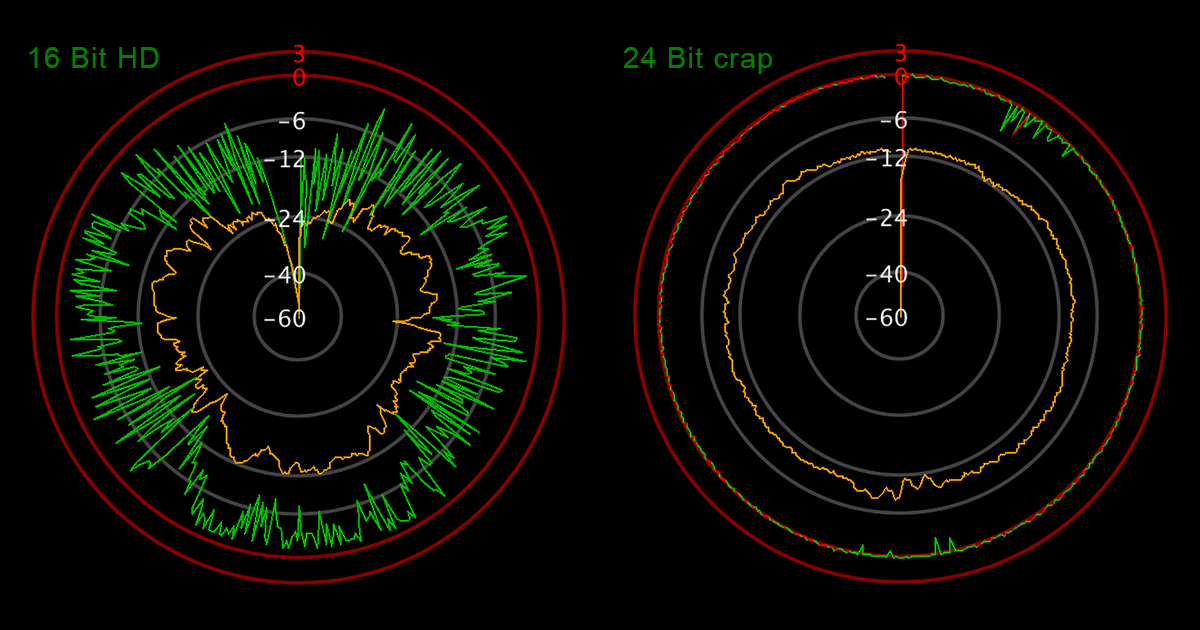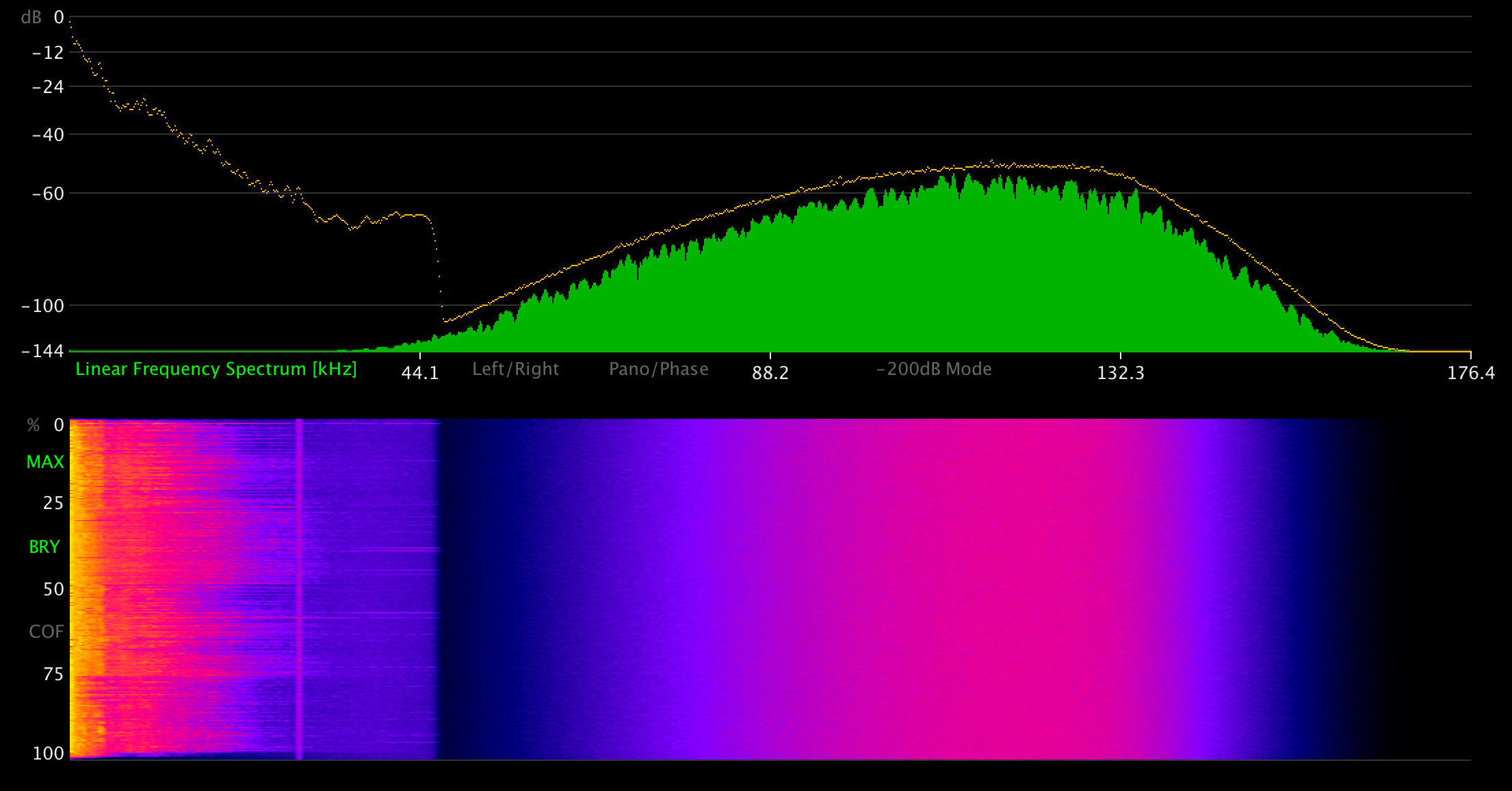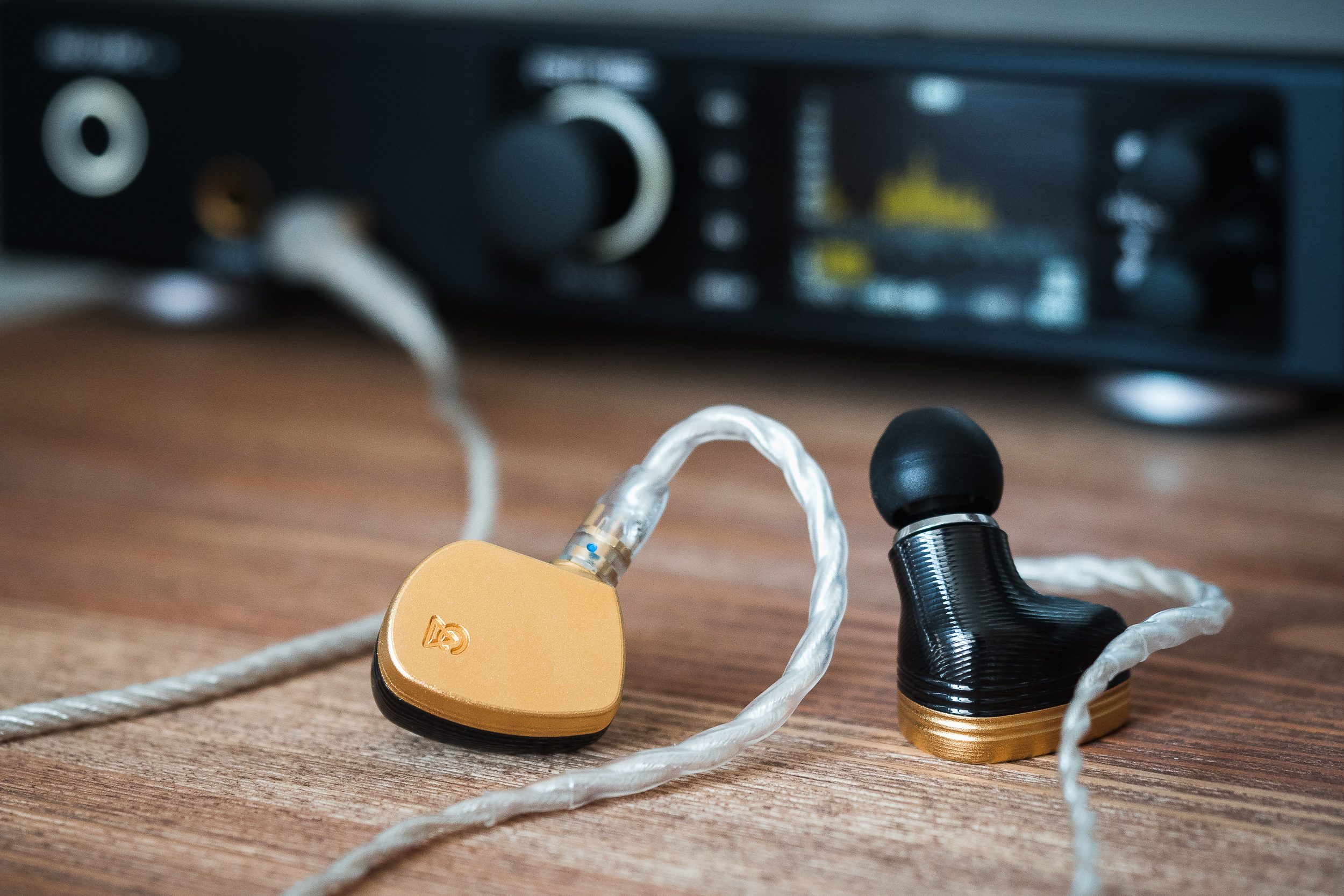
This post is meant as an introduction to HD audio and will explain the fundamentals of hearing and audio data. We live in a fast-paced world in which a lot of information needs to be processed. Rarely do we have the full understanding of a topic and many marketing teams exploit this weakness with distorted perspectives – or even wrong facts.
Quick Navigation
Audio Resolution aka Dynamic Range
Dynamic range is per definition the resolution of the audio. It is measured in dB on a bit depth scale. It says how much loudness information the audio can carry. Even though the actual loudness is not the important factor, its resolution decides about the amount of quantization errors that rounded values create when applying a numeric value to the amplitude of a tone. As a result, higher resolution results in lower noise.
Sample Rate
Contrary to popular belief or false marketing, digital audio does not have any bars or steps in the audio information. The digital data only contains information on how to reproduce sine waves. The amount needed is more than two dots per sine. This is known as the Nyquist theorem. So if you want to reproduce a tone of 20.000 Hz, you need more than 40.000 samples per second. That means a 44,1 kHz sampling rate is enough to capture and reproduce all sounds up to 20 kHz. Oversampling will not change the tone. Remember, the amplitude is captured by bit depth, not by the sampling rate.
I absolutely recommend watching this YouTube video from Xiph.org about digital audio.
Youtube.com
The Human Hearing
Everybody thinks they have special powers. This might be because our childhood heroes are not politicians or scientists, but because our heroes can fly, go invincible, accumulate insane strength, etc. It’s important for a healthy mindset to have these heroes that help us push beyond “limits”, but for hearing, it’s recommended to stay on the ground and stick with facts.
Frequency Range
When scientists say that we can hear 20 – 20 kHz they are being generous. At the age that you are able to afford hi-fi gear, it is much more likely that your hearing capability stops at around 17 kHz. That is not a bad thing. Our fathers and grandfathers did not have better hearing than us, so luckily our culture does not often use any instruments that are supposed to play notes higher than 12 kHz. There have been means to tune and change instruments to achieve higher notes but it’s very unlikely you will find any on published music. Keep in mind that every instrument has harmonics that reach higher but fall off in pressure.
Resolution
How much loudness do we need? Just try it for yourself! There is a great and simple test on Hydrogenaud.io that has recorded speech in different volumes. Even with high-end (summit-fi) audio, most people will struggle to hear more than 80 dB, rarely more than 70 dB. Of course this can be improved with training. But also any noise, especially tinnitus, will lower the resolution significantly. Most audio chains will limit the resolution not because of the digital audio format, but because of analogue hiss or other unwanted effects in the audio chain. Our hearing will also adjust and we actually cannot jump quickly between loud and silent noises. So even with tests like the one linked below, this is a very favorable result.
hydrogenaud.io

HD Does Not Mean “High Definition”
Be wary of “HD” audio. After all, HD audio formats are only a container. They provide more space than a CD but that does not mean that it contains useful information. Especially with older releases they did not often have the possibility to record more dynamic range than the CD provides. Neither 24 Bit nor DSD can change that. Usually SACD features “studio masters” with less compression, which partly explains why many speak of better sound quality. (Also, the more expensive hardware is also optimized for audiophile users.) But the file format has little to do with it and it would sound the same when released on CD.
So Why Even Listen to HD Audio?
Considering the natural limitations, false marketing, devious HD releases and bottlenecks in the audio chain, the question to why even spend money on HD audio is a justified one. The obvious answer is: because we can. Also, HD audio can come in handy when we manipulate the information, say we want to apply filters or make use of an EQ. This is becoming more and more common even for the consumer. Finally, not every DAC works the same and there are different methods to handle the data, especially around the Nyquist frequency. If the the Nyquiest frequency is higher, DAC filters can potentially have less unwanted effects.
Real Life Experience
So what does that tell us? What do I look for in my everyday porta-fi quest? Most of all, the recording and its mastering is important. There is a lot of low quality audio being sold as HD or unnecessary space wasted with DSD. CD is and always will be good enough – as long as the space is used wisely. That explains my username on instagram: 16Bit Audiophile.
Assuming you had a perfect 16 Bit master audio file, it’s likely that there will be other issues hindering the perfect reproduction: distortion of the ear- and headphones, IMD of the DAC, hiss of the amp, personal hearing ability, etc.. “High-Fidelity” is striving for perfection. We will never be able to fully achieve it, but we want to limit the errors as much as possible. Audio format is one problem we can theoretically easily solve today with HD, even if it’s not the most important.
I recommend XiVero MusicScope to take a close look at your audio tracks.
xivero.com

